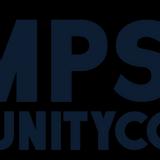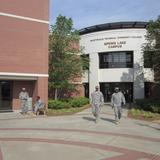- Sampson Community College, founded as an extension unit of the Goldsboro Industrial Education Center, was chartered as an independent member institution of the North Carolina Community College System in 1967. The College operates as a comprehensive two-year public community college serving adult students of Sampson and surrounding counties. Consistent with the historical traditions of North Carolina`s community colleges, the College affirms its belief in the incomparable worth of all students and its commitment to open-door student admissions. Central to this commitment, the College recruits and retains outstanding faculty members who support this mission and are dedicated to the art of teaching and advising students from all backgrounds and at all levels of educational preparation.
School Highlights
Sampson Community College serves 2,184 students (34% of students are full-time).
The college's student-teacher ratio of 11:1 is lower than the state community college average of 13:1.
Minority enrollment is 55% of the student body (majority Hispanic), which is more than the state average of 48%.
Quick Facts (2025-26)
- Enrollment: 2,184 students
- In-state tuition: $1,255
- Out-state tuition: $4,327
- Student-teacher ratio: 11:1
- Minority enrollment: 55%
- Source: Integrated Postsecondary Education Data System (IPEDS)
Top Rankings
Sampson Community College ranks among the top 20% of public schools in North Carolina for:
Category
Attribute
Affordability
School Overview
The teacher population of 191 teachers has stayed relatively flat over five years.
Sampson Community College
(NC) Community College Avg.
Carnegie Classification
Associate's Colleges: Mixed Transfer/Career & Technical-High Nontraditional
Associate's Colleges: Mixed Transfer/Career & Technical-High Nontraditional
Institution Level
At least 2 but less than 4 years
At least 2 but less than 4 years
Institution Control
Public
Public
Total Faculty
191 staff
256 staff
School Calendar
Student Body
The student population of Sampson Community College has grown by 52% over five years.
The student-teacher ratio of 11:1 has increased from 8:1 over five years.
The Sampson Community College diversity score of 0.68 is more than the state average of 0.66. The school's diversity has stayed relatively flat over five years.
Total Enrollment
2,184 students
2,579 students
Student-Teacher Ratio
11:1
13:1
# Full-Time Students
737 students
766 students
# Part-Time Students
1,447 students
1,813 students
# Enrollment Undergraduate
218 students
316 students
# Full-Time Undergraduate Students
737 students
766 students
# Full-Time Graduate Students
n/a
22 students
# Part-Time Undergraduate Students
1,447 students
1,990 students
# Part-Time Graduate Students
n/a
3 students
Total Dormitory Capacity
n/a
717 students
% American Indian/Alaskan
2%
1%
% Asian
1%
3%
% Hispanic
29%
13%
% Black
19%
21%
% White
45%
52%
% Hawaiian
n/a
1%
% Two or more races
2%
3%
% Non Resident races
1%
1%
% Unknown races
1%
5%
Diversity Score
0.68
0.66
College Completion Rate (Students who graduate in less than 4 years)
30%
37%
College Completion Rate (Students who graduate in 4 years or more than 4 years)
n/a
43%
Average Graduate Earnings (10 Years)
$26,300
$27,500
Tuition and Acceptance Rate
The public in-state tuition of $1,255 is less than the state average of $3,915. The in-state tuition has declined by 55% over four years.
The public out-state tuition of $4,327 is less than the state average of $9,508. The out-state tuition has declined by 55% over four years.
In-State Tuition Fees
$1,255
$3,915
Out-State Tuition Fees
$4,327
$9,508
Tuition Notes
$2,100 per semester (for in-state tuition)
% Students Receiving Some Financial Aid
73%
82%
Median Debt for Graduates
n/a
$11,865
Median Debt for Dropouts
n/a
$5,846
Acceptance Rate
n/a
82%
SAT Reading
n/a
488
SAT Math
n/a
498
ACT Composite
n/a
20
ACT English
n/a
13
ACT Math
n/a
16
Source: 2024 (or latest year available) Integrated Postsecondary Education Data System (IPEDS)
School Notes
- The college added additional facilities in 1982 with the construction of a 6,000 sq. ft. vocational shop building on the main campus and the county's provision of 8,000 sq. ft. in the new Courthouse Annex for the Continuing Education Division. In October 1987, the college changed its name to "Sampson Community College." The Board of Trustees approved changing the name of West Building to W. W. Kitchin Hall on August 21, 1989, and South Building to the Robert D. Warren Student Center on June 10, 1997. In the fall of 1998, two new buildings, the Technology Center and the Activities Center, were occupied. The College's educational programs are comprehensive, ranging from instruction in basic skills through collegiate studies at the sophomore level. A principal focus of the College's curricular programs is to provide occupational education at the certificate, diploma, and degree levels in programs of study that lead to meaningful employment for students in southeastern and central North Carolina. The College also provides opportunities for students to complete general collegiate studies in the arts and sciences leading to associate degrees that qualify them for admission and success in senior institutions. As part of its commitment to lifelong learning, the College offers continuing education to adult students including opportunities to acquire basic skills, to complete the GED, and to participate in non-credit academic and personal enrichment classes. The College recognizes its obligation to work cooperatively with local business and industry, public schools, professional and trade associations, and community organizations to develop and deliver a comprehensive educational program that meets the needs of these constituents. The College supports local and regional economic development efforts and provides industries with access to specialized state-sponsored training and financial incentive programs.
Frequently Asked Questions
How much does Sampson Community College cost?
Sampson Community College's tuition is approximately $1,255 for In-State students and $4,327 for Out-State students.
What is Sampson Community College's ranking?
Sampson Community College ranks among the top 20% of community college in North Carolina for: Least expensive tuition.
Recent Articles

How to Transfer from Community College to a Four-Year University in 2025
A step-by-step guide for community college students transferring to a four-year university in 2025 — updated strategies, data and expert insights.

Scholarships for Community College Students 2025
Explore updated scholarship programs, tuition data, and expert strategies for community college students in 2025.

The Rise of Technical and Vocational Training in 2025
Explore the 2025 surge in technical and vocational training—enrollment, policy, costs, and why this path is gaining ground for students and parents.














